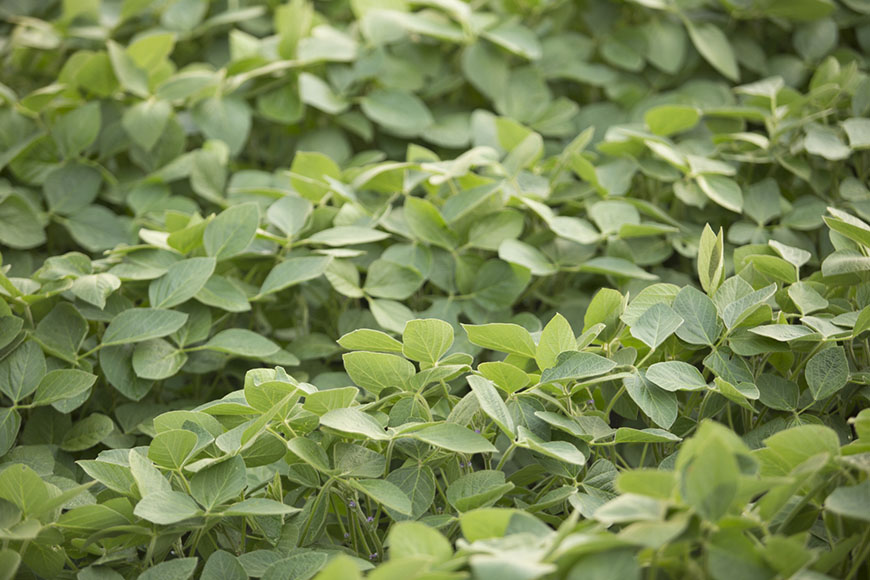Minimize In-Season Yield Loss in Soybeans

We recently examined ways to minimize in-season yield loss in corn by applying crop protection products at critical growth stages. With soybeans, in-season management begins underground, with the roots.
As with corn, you can use in-season imagery to determine problem areas in your soybean fields. However, it’s also important to use “old-school” techniques to monitor soybean root nodule development. Take a shovel into the field, dig in the soil and notice how the plant is emerging. Since fungal diseases can occur prior to emergence, they can be fairly well controlled with a fungicide.
Because soybeans fix their own nitrogen, it’s best to apply phosphorus and potassium prior to planting. Planting seed that has been treated with an insecticide and a fungicide can provide up to 50 days of protection during those early days of growth and emergence. If you’ve had disappointing results using untreated soybean seed, talk with your agronomist about planting treated seed next year. It could be an excellent addition to your soybean management program.
Adding an adjuvant can help get crop protection products deep into the canopy, where they can be the most effective. Remember that when you protect soybean leaf health, you help keep pods healthy, too. R1 (first flowering) is an excellent time to apply fertilizer. Check in at R3 to ensure pods are healthy.
Consult your WinField retailer about the management strategies that would work best for your fields.
As with corn, you can use in-season imagery to determine problem areas in your soybean fields. However, it’s also important to use “old-school” techniques to monitor soybean root nodule development. Take a shovel into the field, dig in the soil and notice how the plant is emerging. Since fungal diseases can occur prior to emergence, they can be fairly well controlled with a fungicide.
Because soybeans fix their own nitrogen, it’s best to apply phosphorus and potassium prior to planting. Planting seed that has been treated with an insecticide and a fungicide can provide up to 50 days of protection during those early days of growth and emergence. If you’ve had disappointing results using untreated soybean seed, talk with your agronomist about planting treated seed next year. It could be an excellent addition to your soybean management program.
Adding an adjuvant can help get crop protection products deep into the canopy, where they can be the most effective. Remember that when you protect soybean leaf health, you help keep pods healthy, too. R1 (first flowering) is an excellent time to apply fertilizer. Check in at R3 to ensure pods are healthy.
Consult your WinField retailer about the management strategies that would work best for your fields.

